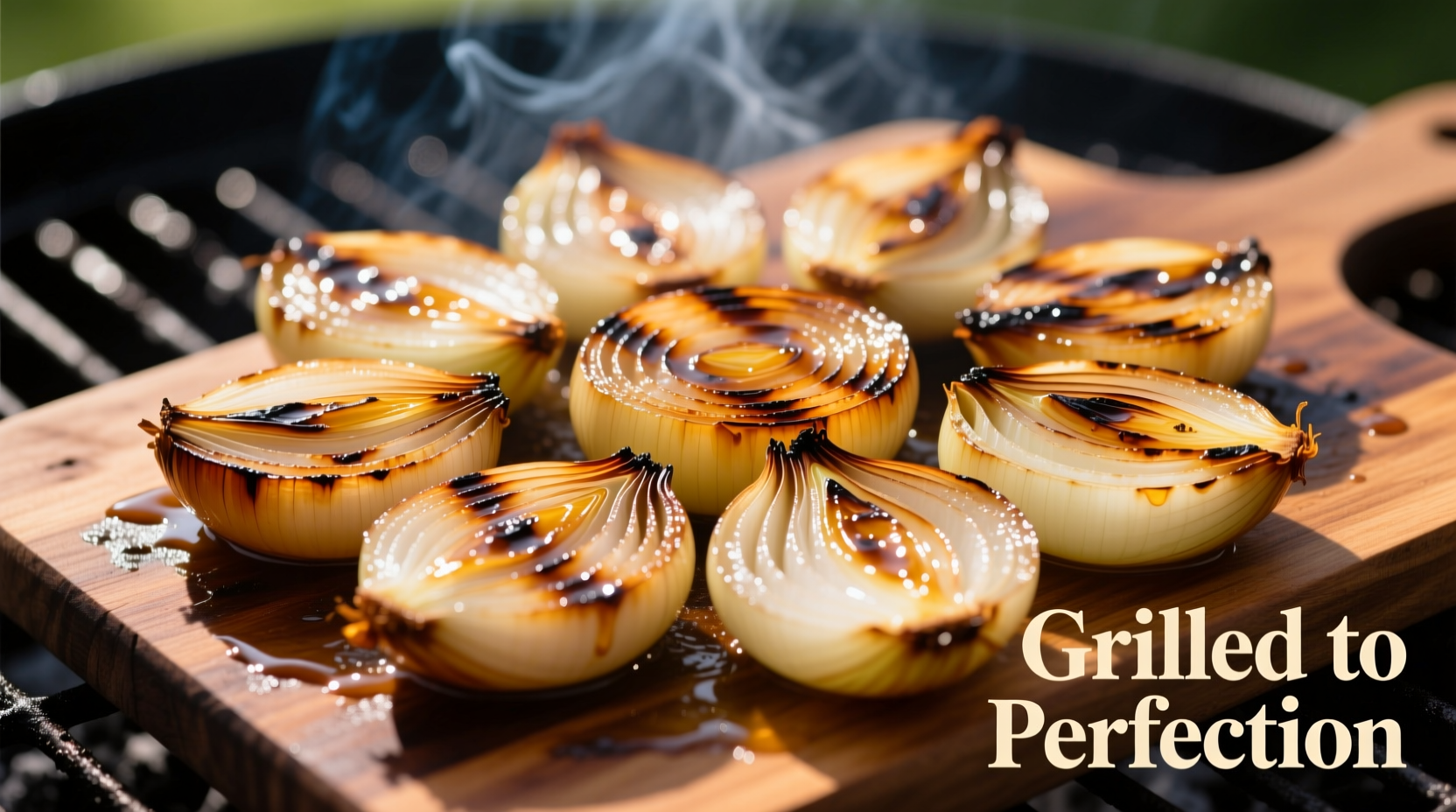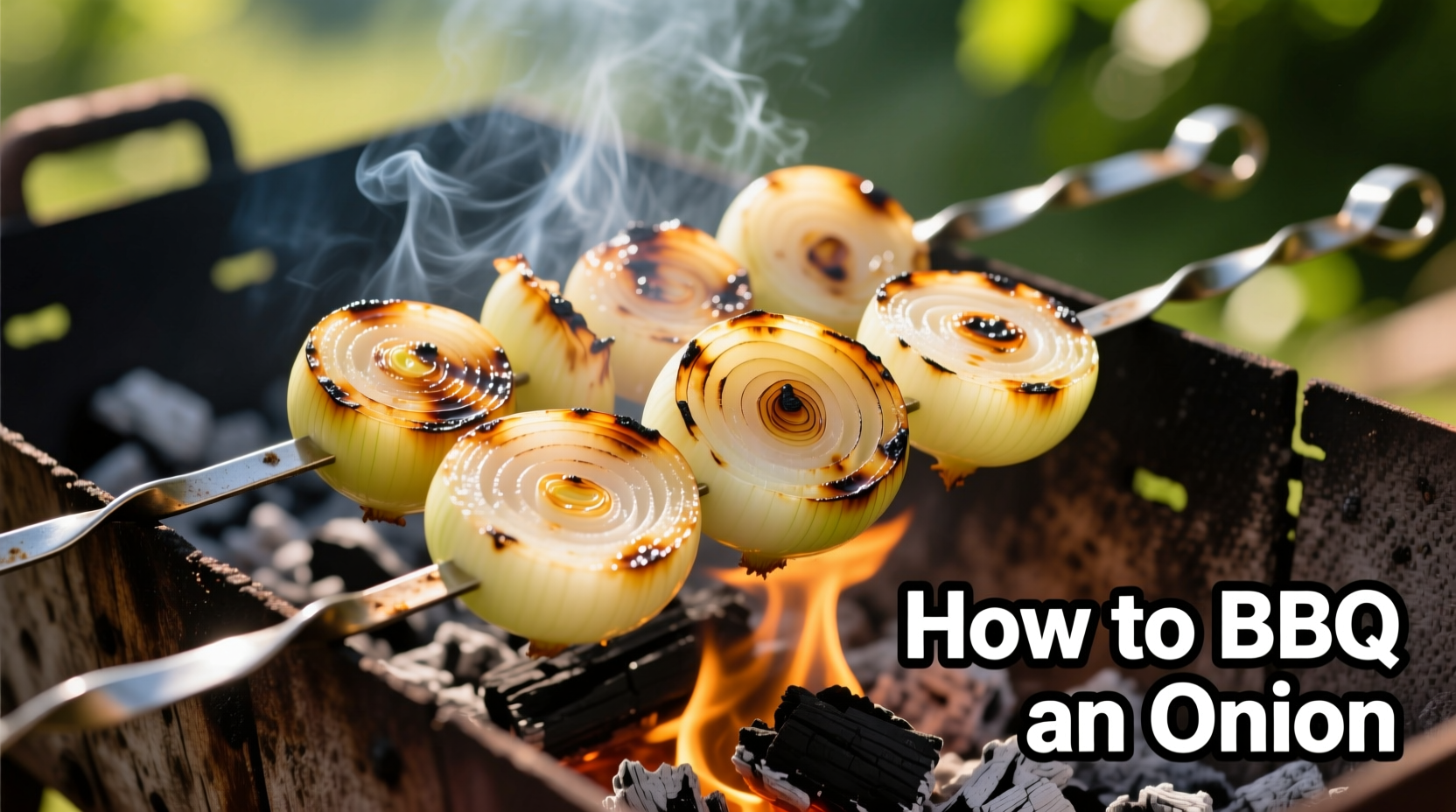There's nothing quite like the sweet, smoky flavor of perfectly grilled onions. Whether you're hosting a summer barbecue or simply want to elevate your weeknight dinner, mastering this simple technique unlocks a world of culinary possibilities. Forget soggy, burnt, or falling-through-the-grill disasters—this guide delivers professional results every time with science-backed techniques you can trust.
The Science Behind Perfect BBQ Onions
When onions hit the grill, a magical transformation occurs. The natural sugars caramelize through the Maillard reaction, while sulfur compounds break down, eliminating that raw bite. According to research from the USDA Agricultural Research Service, grilling actually increases certain beneficial antioxidants in onions by up to 25% compared to raw consumption.
Choosing Your Onion: Varieties Compared
| Onion Type | Sweetness Level | Best For | Grill Time |
|---|---|---|---|
| Vidalia | ★★★★★ | Direct grilling, kebabs | 12-15 minutes |
| Red Onion | ★★★☆☆ | Slicing, burgers | 15-18 minutes |
| Yellow Onion | ★★★☆☆ | Skewers, foil packets | 18-22 minutes |
| Shallot | ★★★★☆ | Delicate dishes, sauces | 10-12 minutes |
Professional chefs prefer Vidalias for their high sugar content (averaging 12-14% compared to 5-7% in yellow onions), but red onions maintain their striking color and offer the best structural integrity for slicing. The Oregon State University Food Science Department confirms that red onions contain anthocyanins that stabilize when heated, preserving their visual appeal.
Preparation: The Critical First Step
Improper cutting causes the most common BBQ onion failures. Follow these professional techniques:
- For slices: Cut parallel to growth rings (not through the root end) to maintain structural integrity
- Thickness matters: 1/2-inch slices prevent falling through grates while allowing even cooking
- Oil properly: Toss in 1 tbsp high-smoke point oil (avocado or grapeseed) per onion—never olive oil which burns at 375°F
- Season smartly: Salt draws out moisture—apply after grilling for best results

Grilling Process: Temperature Control is Key
Temperature management separates good from great grilled onions. The USDA Food Safety and Inspection Service recommends maintaining grill temperatures between 350-400°F for vegetables. Higher temperatures cause burning before proper caramelization occurs.
- Preheat grill to medium (350-400°F)—you should hold your hand 5 inches above grates for 4-5 seconds
- Clean and oil grates thoroughly with tongs and oiled paper towel
- Place onions perpendicular to grates to prevent slipping
- Cook 7-9 minutes per side without moving (creates perfect sear marks)
- Rotate 90 degrees for crosshatch marks (optional but professional)
- Remove when deeply caramelized and tender when pierced with fork
Doneness Indicators: Beyond Guesswork
Don't rely on timing alone. Perfect grilled onions show these visual and textural cues:
- Color transformation: From white/translucent to deep golden brown
- Texture: Tender but still holding shape (not mushy)
- Shrinkage: Reduced to about 60% of original size
- Aroma: Sweet, caramelized scent without bitter smoke notes
Flavor Pairing Strategies
Grilled onions shine in these combinations:
- Protein partners: Burgers, steak, chicken thighs, portobello mushrooms
- Acid balance: Finish with lemon juice or apple cider vinegar to cut richness
- Herb accents: Fresh thyme or rosemary added during last 5 minutes
- Global twists: Balsamic glaze (Italian), soy-ginger (Asian), or chipotle (Mexican)
Troubleshooting Common Problems
Fix these frequent issues with professional solutions:
- Falling through grates: Use thicker slices or grill basket—never press down with spatula
- Burning before cooking: Lower heat immediately and move to cooler part of grill
- Excess moisture: Pat slices dry before oiling—wet onions steam instead of sear
- Uneven cooking: Rotate onion pieces to different grill zones during cooking
Storage and Reheating Tips
Store cooled grilled onions in airtight container for up to 5 days. Reheat gently in skillet over medium-low heat to preserve texture—microwaving makes them soggy. For meal prep, freeze in single layers then transfer to freezer bags for up to 3 months.











 浙公网安备
33010002000092号
浙公网安备
33010002000092号 浙B2-20120091-4
浙B2-20120091-4